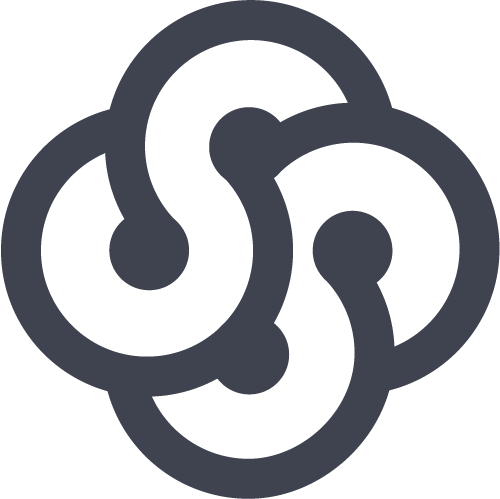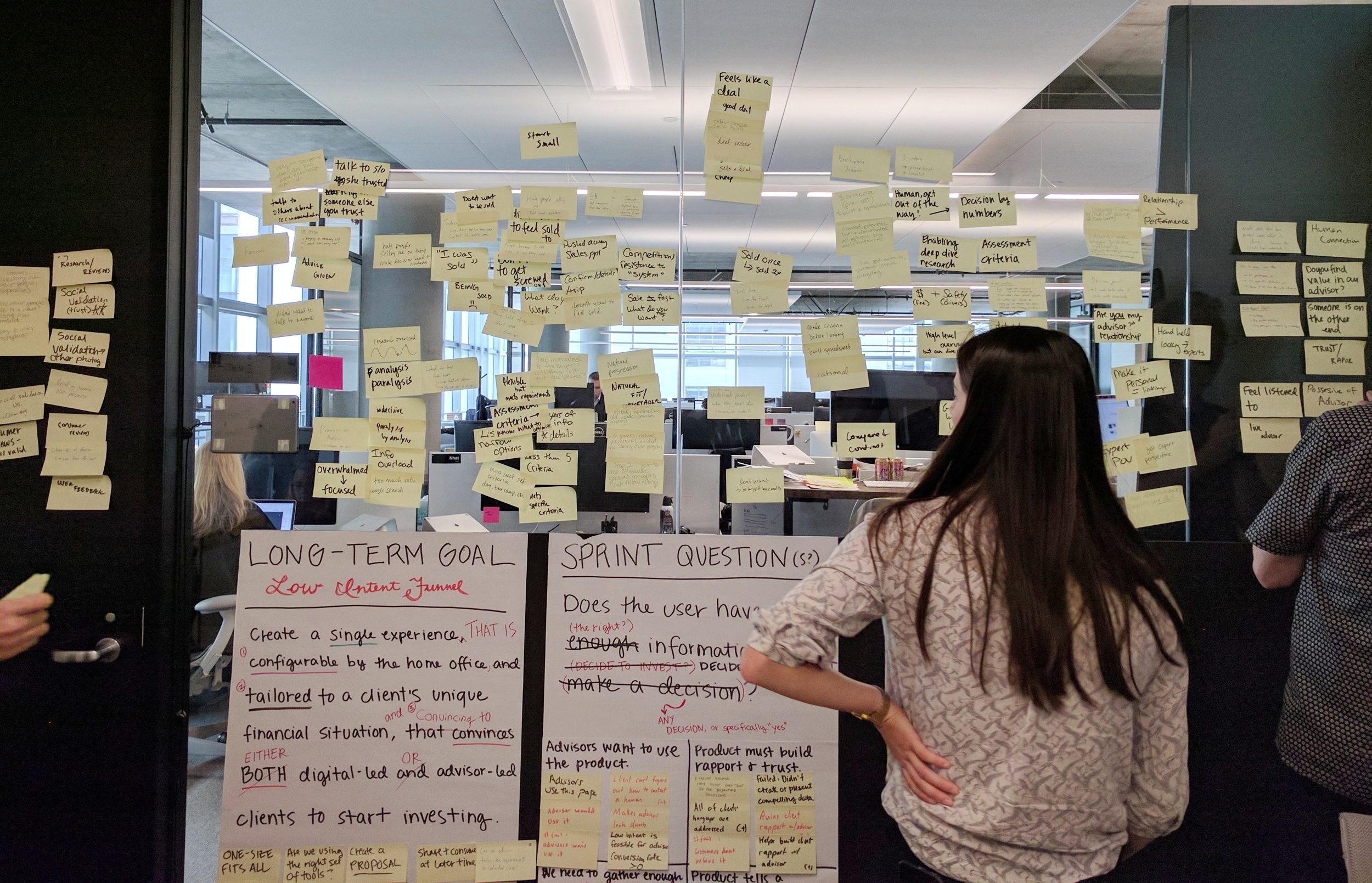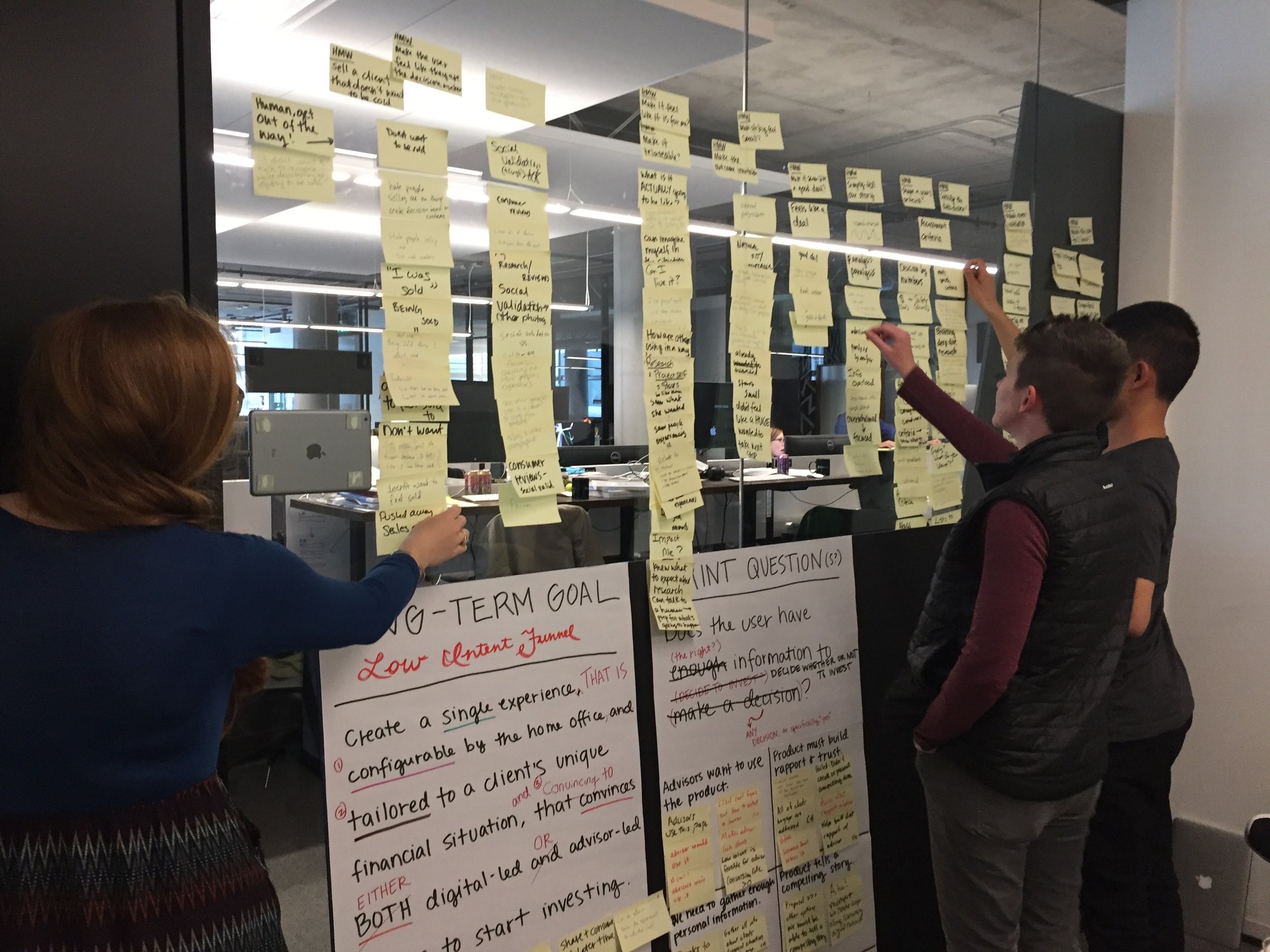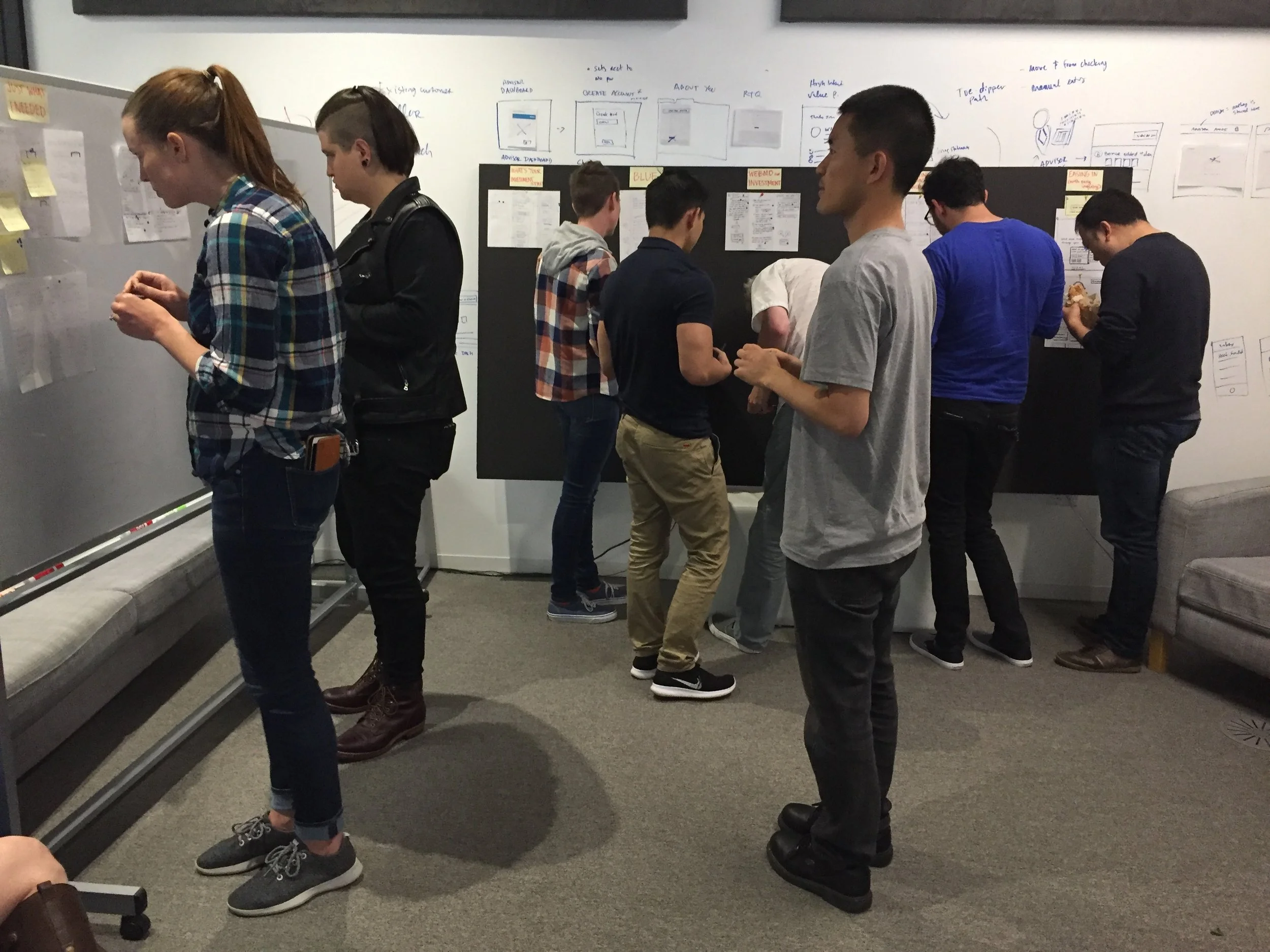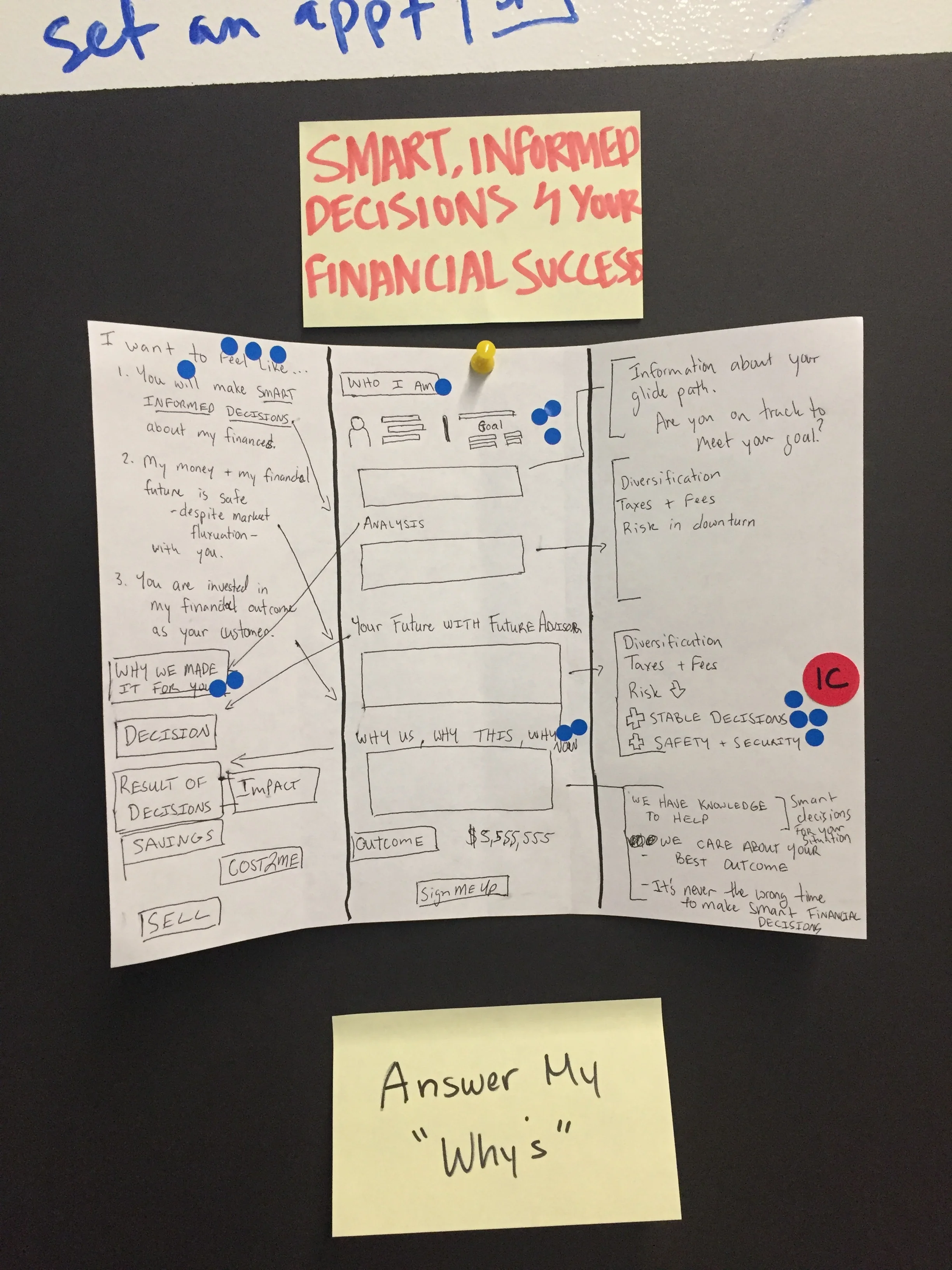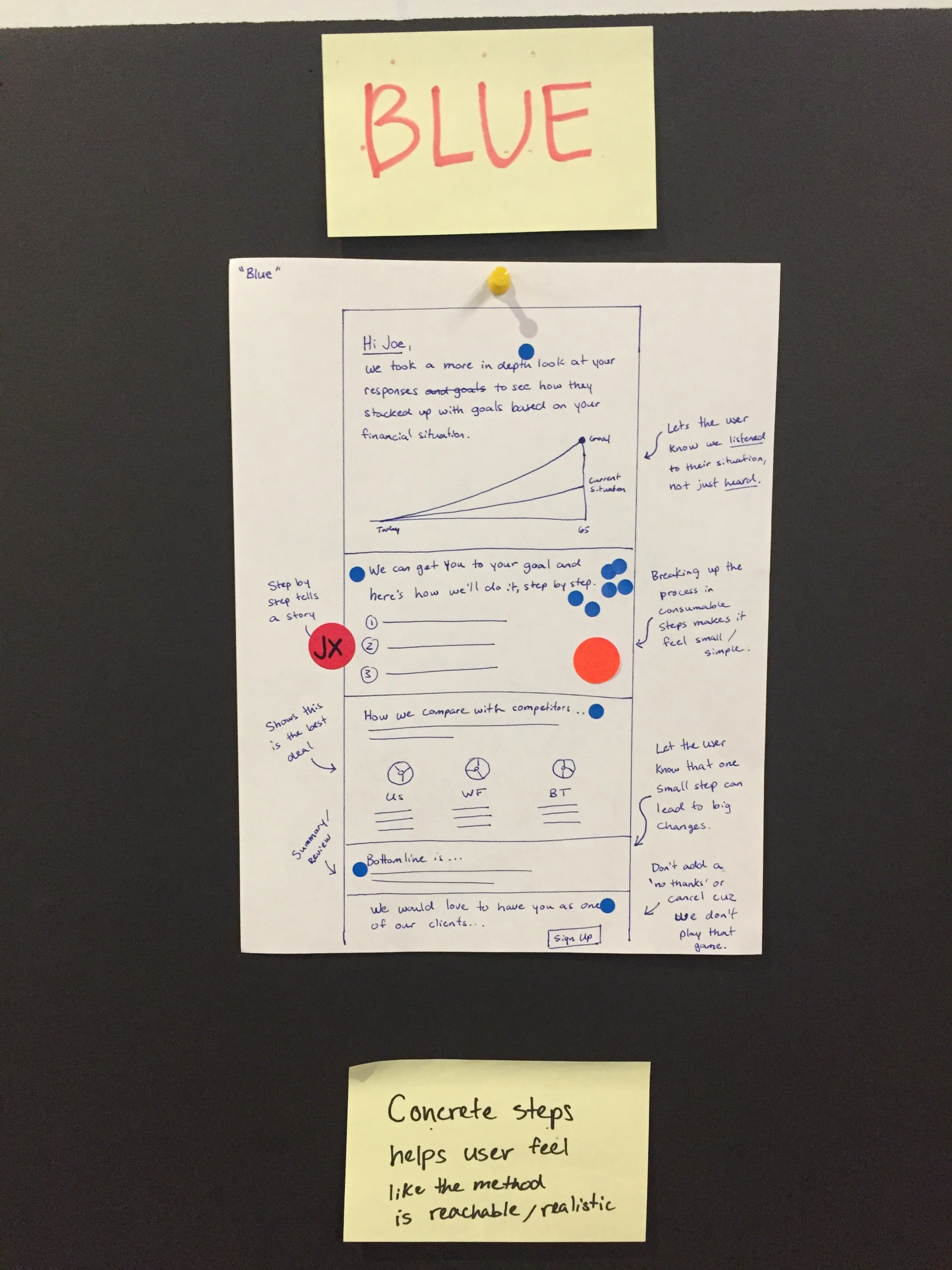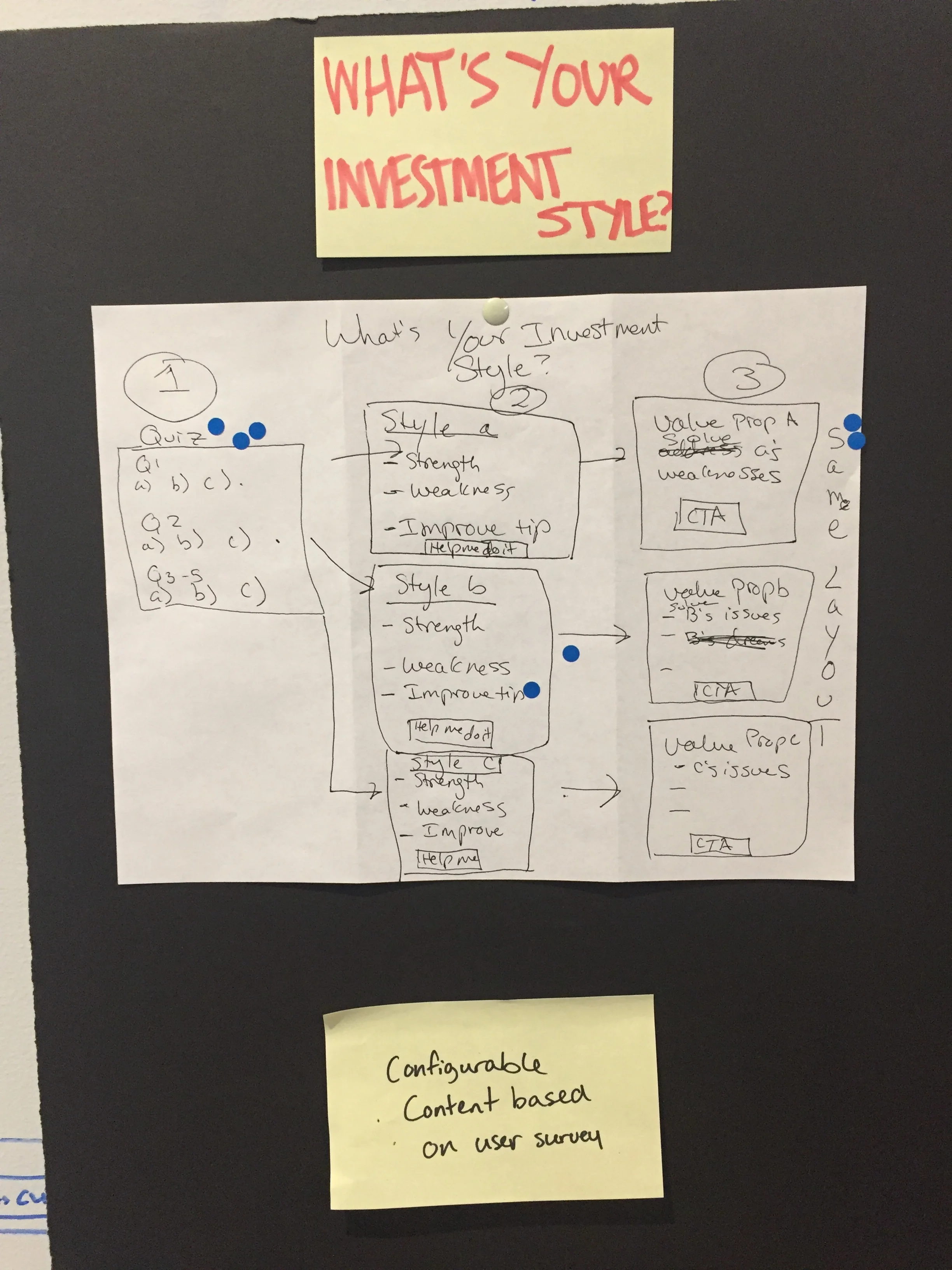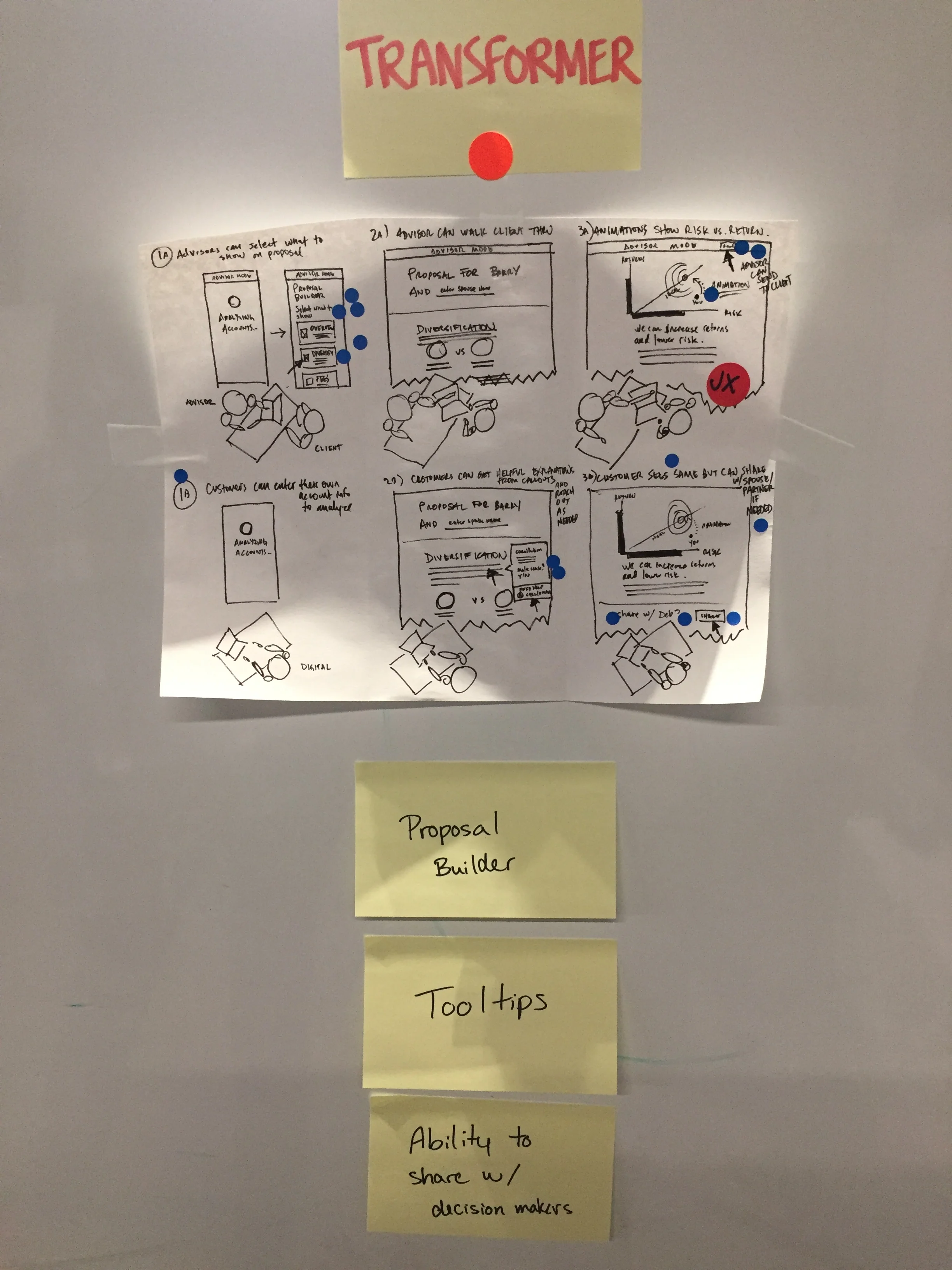FutureAdvisor | Design Sprint
About FutureAdvisor
FA aims to create better financial outcomes for everyday families by partnering with banks and brokerages to provide robo-advising services to millions.
The Challenge
Design an experience that convinces ambivalent users that our product can help improve their financial situation.
My Role: Facilitator
I facilitated the design sprint and was the design lead for this project. For deets on our post-sprint work, check out this case study.
TL;DR
Our team was challenged to design an onboarding flow that convinces users that our product can help improve their financial situation. This case study is about our Design Sprint, which helped us inform the V1 features. You can read about the rest of the work in this case study.
Why does it matter to FutureAdvisor?
This is the product's pitch to potential clients. We have to explain and sell some really complex concepts in a digestible way. A lot of money is on the line!
Design Process
We kicked off the project with a GV-inspired design sprint. We decided to run a sprint because we didn't yet have a clear direction for this complex feature. We wanted to capture insights and ideas from across the business to find our direction fast. That's the perfect use case for a sprint!
The Team
We wanted our sprint team to be representative of the voices and opinions across FutureAdvisor. Our team included members from business development, product, engineering, marketing, design, executive, and financial advisor teams.
Day 1: Understand
Long-term goal
We started off the sprint by identifying our long-term goal, which answers the question "Why are we doing this project?" After much debate, here's where we landed:
"Create a single experience, that is configurable by the home office, tailored to a client's unique financial situation, and is convincing to either digital-led or advisor-led clients."
We used this goal as a north star throughout the project, making sure our decisions fell in line with this goal.
*Note: There's some industry- and company-specific language in our goal. For brevity's sake, I left out lots of details that aren't vital to understanding the case study. I can explain the nitty-gritty in person, if you'd like!
Sprint question
With our long-term goal in mind, we considered a scary scenario: "Imagine we travel into the future and our project failed. What might have caused that?"
We chose a cause of failure, then we rephrased it to form our sprint question. This sprint question served as a success metric in user testing when we prototyped solutions.
"How Might We...?"
A "by the book" sprint suggests that you interview experts to generate How Might We (HMW) questions. I had limited time to plan the sprint, so I made up a prompt that I could use with participants instead of experts.
I needed a prompt that fit two criteria: (1) it's a common enough experience that all participants could share a story, and (2) it's relevant to our sprint question. Here's what I came up with:
As each participant told their story, everyone else listened for inspiration and took notes. We cleaned up and organized the notes into HMW questions, then we voted on the ones we thought were most useful.
Highlights of the exercise
One participant told a story about shopping for a vacation package on a Disney website. From the imagery to the descriptions, they felt as if the experience had been tailored specifically for them. Based on this, we asked, "How might we make it feel like [the product] is made for me?"
Day 2: Sketch
Crazy 8s
Based on the long-term goal and HMW questions, the team did a series of fast-paced sketching exercises called "Crazy 8s" to capture ideas that had been brewing.
^ This one is mine!! We ended up building the "print" feature in the second panel.
Highlights of the exercise
I love crazy 8s. It's such a stressful 8 minutes! One retrospective highlight is that I can see in my own sketches a feature that eventually got built: the ability to print and take home a report. Whatever hunch I had in this early stage was a good one; our research did show that users desperately wanted that!
Day 3: Decide
Solution sketches & Art gallery
Everyone then created a "solution sketch" to illustrate their solution the sprint goal. On the third day of the sprint, the team reviewed the solution sketches and dot voted for the best ideas.
Decision time
So many great ideas came out of the sprint, but the one that stuck out was the concept of a financial "health check-up." This resonated because of the many parallels between personal finance and health.
For example, people often feel overwhelmed by the prospect of "getting healthy;" similarly, getting your finances in order can seem daunting. In both cases, you often rely on experts (e.g., doctors, financial advisors) to help you make the right decision. We wanted our page to provide the comfort and expertise of a knowledgable doctor with a great bedside manner.
The winning idea! WebMD for investments
Reflections
The sprint was a fast way to clarify the direction for a complex feature while capturing insights from teams that don't traditionally have much say in product decisions.
Here are some of my biggest learnings from facilitating the sprint:
- Push harder for the full 5 days of the sprint. Squeezing everything into 3 days means that things slip through the cracks.
- Enforce attendance. When a key participant stepped away from the sprint, we lost a lot of momentum.
- Straying from the book is fun! The Sprint book should be adapted based on specific project needs.
Postscript: At the end of each sprint day, we consolidated our ideas onto this board. It was a practical and motivating way to track progress. At the time of writing, it still lives in the FutureAdvisor office. Coworkers from across the company, new hires, and partners stop by the board to get a peek into our design process.
